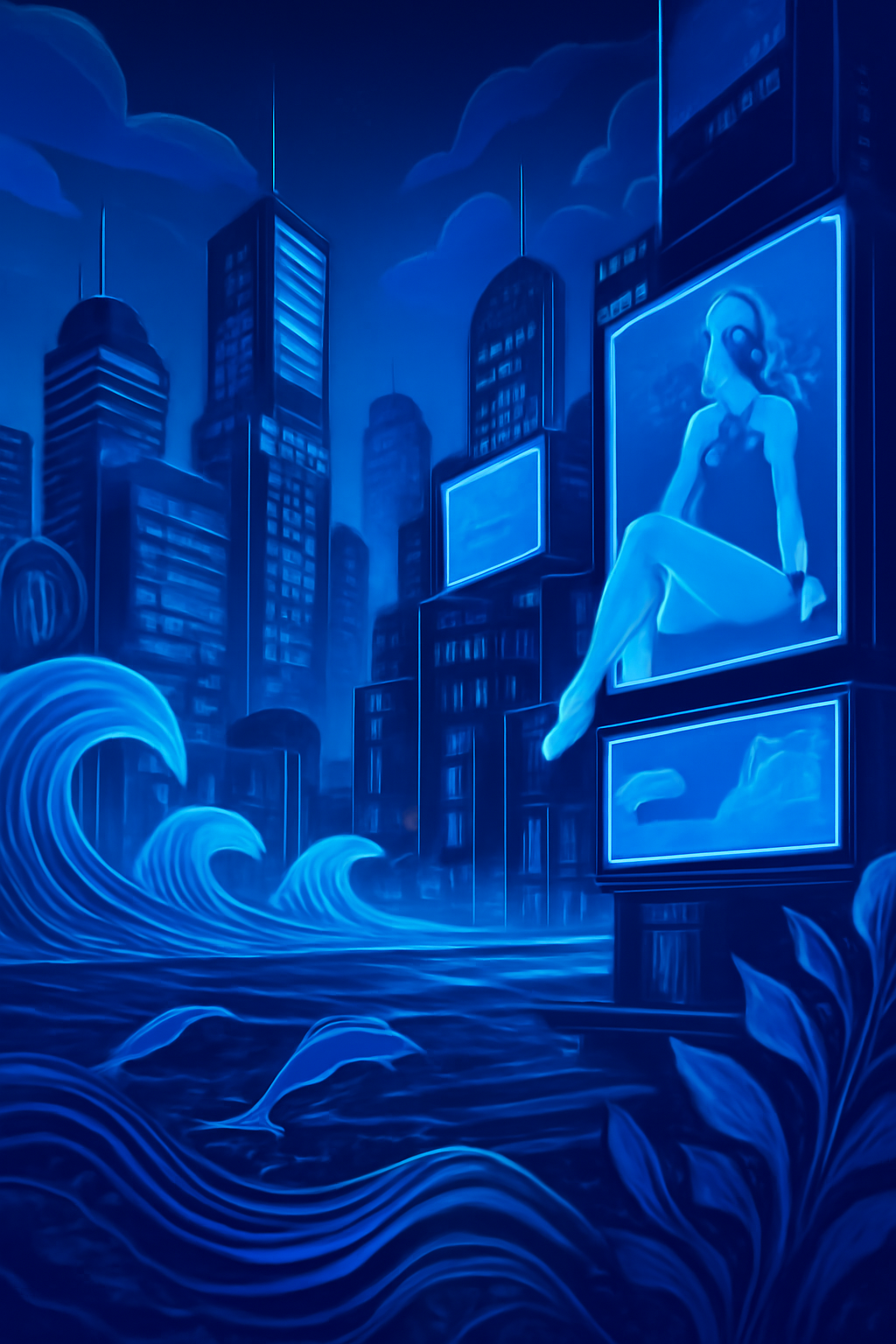In the evolving landscape of entertainment, color plays a surprisingly significant role in shaping how audiences experience media. While many colors influence our emotions and perceptions, blue stands out—an ever-present hue in our digital screens, movie theaters, and gaming consoles. From its calming psychological effects to its modern, futuristic allure, blue is quickly becoming a dominant color not only in branding but in the entertainment experiences themselves.
As we look toward the future of blue entertainment, several exciting trends are emerging, driven by advancements in technology, a shift in cultural narratives, and the desire to create immersive, visually striking experiences.
1. Virtual Reality (VR) and Augmented Reality (AR): Blue as a Gateway to New Worlds
In the near future, VR and AR will be at the forefront of entertainment innovation. As VR headsets become more accessible and AR technologies enhance our mobile devices, the entertainment industry will push further into creating immersive digital environments.
Blue, with its association with tranquility and vastness, is already a key player in these technologies. Think of blue skies, oceans, and futuristic cityscapes—all commonly featured in VR and AR experiences. VR games and experiences that take us into the depths of the ocean or into expansive sci-fi landscapes will likely use blue to evoke a sense of freedom and wonder.
Moreover, the blue light emitted by screens in VR and AR will only increase, making it even more important for creators to use the color consciously. Expect to see blue as a constant companion in virtual worlds, carefully designed to evoke emotions that complement the immersive experiences.
2. Blue Cinema: A Symbol of the Futuristic and the Emotional
Hollywood has long relied on blue to communicate a sense of otherworldliness or emotional depth. With the rise of sci-fi and fantasy films, blue has become the color of choice to represent the unknown, whether it's in space, underwater, or a cyberpunk future.
In the coming years, we'll see blue continue to dominate big-budget blockbusters and indie films alike. Whether through digital post-production or the natural lighting of scenes, filmmakers will continue to use blue to establish mood and tone. The cold, steely blue will reflect the growing concerns around climate change, technology, and alienation, while bright neon blues will highlight the increasingly digital, connected world.
We can expect more directors to lean into blue when creating dystopian settings, with futuristic cities bathed in cool, glowing blue lights that reflect a technologically advanced yet emotionally distant society. Films like Blade Runner 2049 and The Matrix already use blue to distinguish their reality from ours, and the trend will likely grow as we enter a new era of cinematic storytelling.
3. Music and the Rise of "Blue" Soundscapes
Music videos have long embraced color to reflect the mood and tone of a song. In the coming years, expect to see even more blue-themed music videos as artists tap into the emotional associations of the color.
Artists will continue to experiment with blue lighting and blue color schemes in their visuals to create an atmosphere that complements their sound. From indie and electronic to pop and hip-hop, blue hues are becoming synonymous with mood-driven, atmospheric visuals. Whether it's an ethereal ballad or an upbeat, futuristic track, blue will be used to reflect the emotional depth of music.
Not to mention, blue soundscapes—think the smooth tones of ambient or synthwave music—are inherently linked with the idea of the future and digital experiences, which will continue to influence how music is presented and consumed.
4. Gaming: Blue-Infused Realities
Video games are another area where blue is making a significant impact. As the gaming industry moves toward more realistic graphics, blue is central to creating immersive, photorealistic environments. From the virtual oceans and skies to futuristic city skylines, blue is the go-to color for both natural and artificial environments.
What's more, blue is often tied to innovation in gaming. It represents the digital space, the matrix of interconnected realities. The rising trend of open-world games with expansive landscapes, whether on land or in the air, will see blue integrated into natural environments like never before. Imagine flying through a virtual sky filled with digital clouds or diving deep into an oceanic world, both bathed in shades of blue.
As next-gen gaming consoles and cloud gaming become mainstream, we can expect the color blue to continue to dominate, helping to define the futuristic experiences of digital landscapes. In fact, companies like Sony with their blue-toned logo and games like No Man's Sky already understand the power of blue in enhancing the immersive experience.
5. Blue and the Sustainability Narrative in Entertainment
In recent years, sustainability has become a key theme in global entertainment, and blue plays a pivotal role in communicating this message. As discussions around climate change intensify, the color blue is increasingly used in films, documentaries, and media campaigns to represent the oceans, sky, and earth—all vital elements of our planet that need protection.
Expect more documentaries and educational media to use blue to symbolize the need for environmental action. From documentaries about the ocean to eco-conscious campaigns, blue is set to become a symbol of global responsibility in entertainment, inspiring audiences to engage with environmental issues in new and meaningful ways.
Conclusion: The Future Is Blue
The future of blue entertainment is both exciting and expansive. As virtual experiences, cinema, music, and gaming continue to evolve, blue will remain an essential color—a symbol of the future, an emotional connector, and a reminder of our responsibility to the world around us.
Whether you're exploring new digital landscapes in VR, watching the latest sci-fi blockbuster, or engaging with the blue-infused soundscapes of music videos, expect blue to be an ever-present force in shaping the entertainment experiences of tomorrow. So, as you dive into your next immersive journey, remember: the future is, quite literally, blue.
















